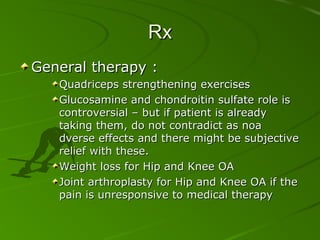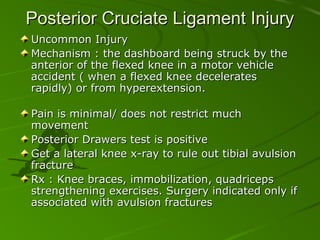This document provides information on various rheumatological conditions including osteoarthritis, gout, rheumatoid arthritis, systemic lupus erythematosus, scleroderma, Sjogren's syndrome, and polymyalgia rheumatica. It describes the diagnostic criteria, clinical features, organ involvement, treatment recommendations, and important complications for each condition. Key points include the importance of Heberden's and Bouchard's nodes in diagnosing osteoarthritis, using allopurinol to treat gout and prevent attacks, methotrexate and TNF inhibitors for treating rheumatoid arthritis, and aggressive treatment of lupus nephritis to prevent morbidity.

















































































